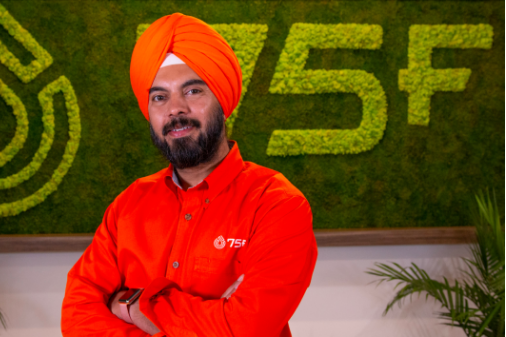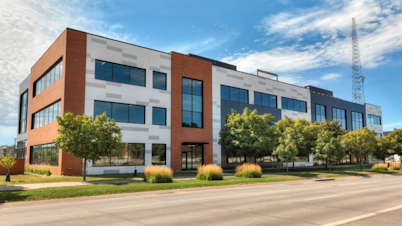
The Importance of IAQ and Healthy Work Environments in the COVID-19 Era
Even before the COVID-19 outbreak there had been a significant increase in attention focused on important issues such as indoor air quality, healthy environments, and occupant productivity. But now with a large percentage of the world's real estate on lockdown or in the early states of being re-opened, that level of interest has gone to an entirely new level.
Prior to joining 75F in January of this year, I had the opportunity to spend two-and-a-half-years working on the design, development, construction, and commissioning of the ‘Nation’s Smartest Fire Station’. When Kansas City, MO was ready to build its first new fire station in nearly a decade, they did so with firefighter safety and environmental sustainability at the forefront. This new station was a pilot in the KC Smart Sustainability Program, part of their Emerging Technology Initiative for Smart Cities.
The building is outfitted with IoT sensor technology intended to reduce the firefighters’ exposure to harmful airborne carcinogens which can be released during a fire by continuously monitoring the indoor environment and apparatus bay. Sustainability is further achieved through control of state-of-the-art HVAC systems, monitoring energy usage, and water reclamation systems. The Smart Building System provides a unified way for occupants and city administrators to view and control the station’s building conditions from a secure online App.
A primary goal of the project was to prove that the cost of including IoT and Big Data in a construction project was minimal, but the benefits would be exceptional, and measurable. Integration of devices, systems, and data for the measurement and management of air quality, airborne contaminants, and maintaining a healthy environment was the top priority for our design and consulting team. Energy efficiency and total cost of ownership (sustainability) were to also be considerations, but health of firefighters and comfort were at the top of the list.
Creating a customized system for measuring, managing, analyzing, and verifying healthy air was much more difficult in 2018 than it is in 2020 with the recent release of our new operating system, 75F Renatus™. Sensor technology and control strategies will rapidly evolve as many of the worlds smartest people are now acutely focused on finding ways to avoid the impact of another pandemic. In many ways, we are very lucky that the evolution of technology and the passing of time (Moore’s Law) has brought us to a place where we not only have newly invented tech that can assist with making spaces smarter and healthier, but we can actually afford to deploy these new technologies into every size and type building you can imagine.
There are several areas of focus where I believe 75F Renatus™ will make a significant difference:
CO2 - Fresh Air and People Counting:
Research seems to be clearly identifying the difference that fresh air has made on the transmission of COVID-19. Zone-by-zone measurement and tuning of damper and fan settings are now ‘out of the box’ capabilities thatcan be cost effectively deployed with 75F. Correlation of CO2 and people counting is also becoming more important. The ability extract and use CO2 as an obvious proxy for ‘breathing’ can be used by 3rd party applications for a wide variety of use-cases.
Humidity - Measure, Control, Verify.
Yale Researchers have determined that transmission of viruses is affected by levels of relative humidity, and according to the study, higher humidity deters spread. This is just one example of discoveries that will affect that best-practices and operational strategies and sequences in commercial real-estate. 75F can make fine-tuning a building less complicated as it does not require the expensive involvement of traditional BAS systems or programmers. It can also monitor and manage humidity out of the box. See https://msystems.asm.org/content/5/2/e00245-20 from May 2020 for more information.
Air Balancing - Positive Pressure
The impact of proper air balancing has always been important, but it will rise to the forefront with more stakeholders becoming aware of the engineering and controls required to meet new performance expectations and standards. It is likely that set-it-and-forget-it balancing strategies will be replaced with an elevated need to constantly verify and tune the performance of the key equipment.
Sensor Platform - Extensibility
75F currently has a tremendous array of on-board and wired sensor integrations, but until now you’ve only seen the tip of the iceberg. As sensors evolve, and new ones are invented, these devices will find an easy path to integration through one of a variety of physical and data options in the new 75F platform. A critical point to keep in mind is the fact that sensor data that comes through the 75F platform (whether existing or ‘future’) is available for use by 75F applications as well as those developed by third parties via BACnet and/or Haystack API. A wide variety of sensors will be able to piggyback on the platform whether they are being used to effect control loops or not. New testing of laser sensors with precisely tuned optical ranges are showing great promise for sensing COVID-19 as well as a host of other viral contaminants. It’s difficult to know whether the cost of these new sensors will be practical, but we can be confident that the sensor can be integrated into flexible platforms like we have built today at 75F.
Cloud Storage - Access and Speed
Access to data has never been more important. The ability to have lightning-quick response and scalable performance from our apps and third party developers will be seen as a distinct advantage for 75F. Cloud architectures with state-of-the-art layered and modular components will be able to distinguish from the aging architectures used by legacy vendors that have not seen a refresh of technology since the turn of the century.
BACnet - Immediate data availability at a disruptive price point
75F systems are now read/write compatible with hundreds, if not thousands of third party applications, devices and enterprise management systems. It is likely that new innovations and applications will accelerate tremendously in the shadow of COVID-19. Developers and enterprise managers will be looking for cost-effective systems that allow for not only quick and easy integration with existing systems but also for the simplicity and price point that allows technology to be extended to buildings where legacy BAS installation could not be justified.
Buildings are designed for people and those people are the most valuable asset in any building. I believe smart buildings should deliver the ultimate occupant experience including comfortable environments with healthy indoor air quality for maximum focus and productivity. Smart building automation systems such as 75F offers can do their part to facilitate employee workflows and make a great people-centric workplace environment.











